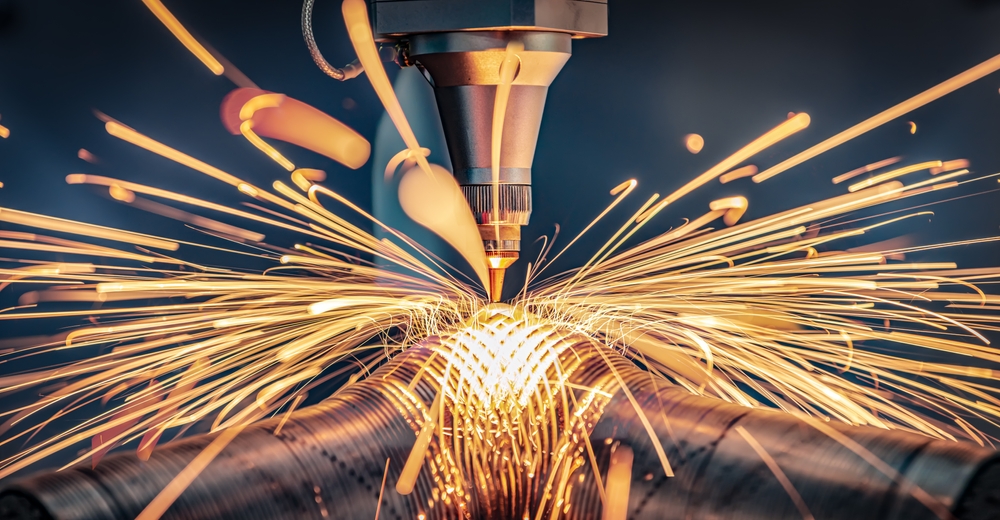
3 Interesting Facts about Metal Fabrication
August 27, 2024 1:36 pm Leave your thoughtsMetal fabrication is an essential process in manufacturing and construction that involves creating metal structures and components by cutting, bending, and assembling metal materials. It plays a crucial role in various industries, including automotive, aerospace, construction, and more. In this blog, we’ll explore three interesting facts about metal fabrication that highlight its importance and versatility.
1. Metal Fabrication Dates Back to Ancient Times
Metal fabrication is not a modern invention; its origins can be traced back to ancient civilizations. Early examples of metalworking can be seen in artifacts from ancient Egypt, Mesopotamia, and China. The ancient blacksmiths used primitive tools and techniques to shape metals like copper and bronze into weapons, tools, and decorative items.
One of the earliest known metalworking techniques is known as “forging,” where metal is heated and hammered into shape. This technique was used to create everything from armor to intricate jewelry. Over the centuries, metal fabrication techniques evolved significantly, leading to the advanced methods we use today.
2. Metal Fabrication Involves a Wide Range of Techniques
Modern metal fabrication encompasses a diverse array of techniques and processes. Some of the most common methods include:
- Cutting: This involves slicing metal sheets or plates into specific shapes and sizes. Techniques such as laser cutting, waterjet cutting, and plasma cutting are commonly used to achieve precise cuts.
- Bending: Bending reshapes metal into various angles and curves. Methods like press braking and roll bending are used to create components with specific geometries.
- Welding: Welding is a process of joining metal pieces together by melting the edges and fusing them. There are several types of welding, including MIG (Metal Inert Gas) welding, TIG (Tungsten Inert Gas) welding, and arc welding.
- Machining: Machining involves removing material from a metal workpiece to achieve the desired shape and finish. Techniques such as milling, turning, and drilling are commonly used in metal fabrication.
- Assembly: After individual components are fabricated, they are assembled into the final product. This can involve welding, riveting, or using fasteners to join the parts together.
These techniques allow metal fabricators to create a wide range of products, from simple brackets to complex machinery parts. The choice of technique depends on the specific requirements of the project and the type of metal being used.
3. The Evolution of Metal Fabrication Technology
The field of metal fabrication has undergone significant technological advancements over the years. Early metal fabricators relied on manual tools and techniques, but today’s metal fabrication processes are often automated and highly sophisticated. Here are a few key technological advancements that have transformed the industry:
- Computer Numerical Control (CNC) Machines: CNC machines have revolutionized metal fabrication by providing precise control over cutting, drilling, and milling processes. CNC technology allows for automated production, reduces human error, and increases efficiency.
- 3D Printing: Also known as additive manufacturing, 3D printing has introduced a new dimension to metal fabrication. Metal 3D printers can create complex geometries and customized parts that would be challenging to produce using traditional methods.
- Advanced Welding Techniques: Modern welding technologies, such as laser welding and electron beam welding, offer improved precision and strength. These techniques enable fabricators to join metals with minimal distortion and enhanced durability.
- Robotic Automation: Robotics have become an integral part of metal fabrication, particularly in large-scale manufacturing environments. Robotic systems can perform repetitive tasks, such as welding and material handling, with high accuracy and speed.
These technological advancements have not only improved the efficiency and quality of metal fabrication but have also expanded the possibilities for designing and manufacturing metal components. As technology continues to evolve, metal fabricators can expect even more innovative solutions to meet the demands of various industries.
Conclusion
Metal fabrication is a fascinating field with a rich history and a promising future. From its ancient origins to the cutting-edge technologies of today, metal fabrication continues to play a vital role in shaping the world around us. Understanding these three interesting facts about metal fabrication—its historical roots, the diverse techniques involved, and the technological advancements—gives us a deeper appreciation for this essential process.
Whether you’re an industry professional or simply curious about the field, metal fabrication offers a wealth of knowledge and innovation. As industries continue to evolve and new challenges arise, metal fabricators will remain at the forefront of technological advancements, driving progress and creating the structures and components that shape our modern world.
Need Steel Fabricators in Hermiston, OR?
NW Metal Fabricators, Inc. is a family-owned business that has been servicing customers in Hermiston, Oregon since 1986. We have more than 100 years of experience in the food-processing industry and specialize in the custom production of storage bins, conveyors, catwalks, handrails, gates, storage tanks, water heater tanks, sanitary piping, steam piping, and trailer truck hitches. NW Metal Fabricators, Inc. is an accredited member of the local Chamber of Commerce. We are a dedicated business where quality always comes first. Our customers know that they can count on us to make sure that their products are hand-crafted to meet their specifications. Contact us today to learn more about what we can do for you!
Categorised in: Metal Fabrication
This post was written by admin
